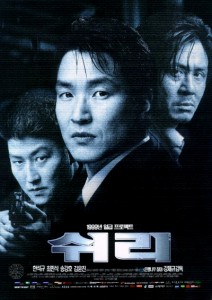
"Shiri" Korean Theatrical Poster
Director: Kang Je-Gyu
Producer: Kang Je-Kyu
Cast: Han Seok-Kyu, Song Kang-Ho, Choi Min-Shik, Kim Yun-Jin, Yun Ju-Sang, Park Yong-Woo
Running Time: 125 min.
By Numskull
Normally, I hate it when people talk about movies “sending messages.” The blocs of suburban yuppie mommies (better known as “soccer moms”) that currently hold a disproportionately large amount of dominion over American life have hijacked the word “message” and imposed upon it a definition along the lines of “an insidious statement contained in a piece of popular entertainment, cleverly veiled or otherwise, designed to warp impressionable young minds” (much like they have seized the word “homophobic” and use it to refer to hatred of homosexuality and its adherents, when, in, fact, the literal meaning of the word is “afraid of people”). Furthermore, “messages” in cinema, by a somewhat different meaning, seem to often be the territory of elitist film buffs so eager to “prove” their (nonexistent) superiority to “normies” that they see (or claim to see) “messages” or hidden meanings in movies where A) they do not actually exist, or B) they are so brazenly obvious that only the most intellectually devoid of all viewers (I’m talkin’ single digit I.Q.s here) could possibly miss them. “Yeah, people don’t get it, but Terminator 2 is really all about, like, the danger of losing our humanity and stuff.” No shit, buddy…now you gonna give me my french fries or what?
Perhaps I speak too much from personal experience rather than general rules of thumb. Either way, in the case of Shiri, it would be pretty much impossible to argue against the movie having a “message” (“theme” is a better term if you ask me, here and in many other such instances), the nature of which was undoubtedly a significant factor in its overwhelming success in its native land of Korea (as opposed to the USA where people, in their infinite wisdom, would rather watch Snow Dogs). The desire for North and South Korea to reunite is quite obvious what with the soccer game subplot and the terrorists’ dialogue (and if you think that a line of dialogue expressing an opinion contrary to that of the majority constitutes a “message” and that, by extension, the writer of the dialogue in question must agree with it…as so many suburban yuppie mommies seem to think…then you’re out of your fucking mind). What REALLY enforces the theme are the smaller touches, like the kissing fish who can only survive in pairs, and Hyun telling Ryu that she’ll be happy as long as he never leaves her.
Political statements aside, Shiri is a solid but not exactly spectacular cop/action movie with the typical incompetent good guys (a dozen of them, toting weapons that can clear a crowded room in a handful of seconds, can’t take out a guy armed only with a handgun), comic relief character (the guy who cleans the fish tanks and, judging by his hair style, dumps the old water onto his head when he’s finished), and requirements for suspension of disbelief (how the hell did Hee just walk away from all those guns pointed at her when her partner was the one with the hostage and they went in opposite directions?). The violence gets pretty over-the-top at times, especially the terrorist training camp sequence at the very beginning. The storyline about top secret explosives being stolen and used to wreak havoc on an unsuspecting populace is a decent enough vehicle for the reunification theme, but the doomed romance elements…well, they suck. I’m tired of that shit.
If you decide to pick up Shiri, go for the double DVD set from Bitwin (“Bi” = two, and I’m sure you all know what “twin” means…hmmm…). Most of the extra features are only in Korean, but you’ll get the movie uncut, in an excellent package, with subtitles that are well above average for Asian DVDs. (The most complete version of a foreign movie is readily available to North Americans. Holy shit, has that ever happened before?)
Numskull’s Rating: 7/10
By Joe909
Though it’s a South Korean production, Shiri has Hollywood written all over it. If I didn’t know any better, I’d swear that Jerry Bruckheimer had something to do with it. From look to feel to story structure, Shiri is more “The Rock” than “The Killer.” The movie even employs the Hollywood standard of the “ticking clock climax,” as our heroes have mere seconds to disarm a bomb that threatens to wipe out an entire city. But beyond the Hollywood-copycat feel, Shiri is still a good film, with several exciting action setpieces.
The plot: Lee Bang-Hee, a female assassin from North Korea, has been preying on politicians in South Korea for years. Ryu, a South Korean secret agent, is obsessed with finding her. Ryu has a life outside of work: he plans to marry his girlfriend Hyun, who owns a fish shop. Hyun gives Ryu a pair of Kissingmaru, fish that need one another to survive. Can you see the melodrama coming? Meanwhile, a group of North Korean commandos gets hold of an experimental bomb called CTX, which is liquid-based and more powerful than any other type of explosive. They plan to use the experimental weapon to engender a new war between North and South Korea, one which will hopefully result in a unification of the rival nations.
Before the film’s end, Ryu will be shaken by an unpleasant surprise: one that isn’t very plausible, but is effective nonetheless. However, this surprise (and the action that leads to and results in its revelation) doesn’t come until the second hour of the movie. The first hour is boring, full of static scenes of characters talking about doing something, then doing it: a definite no-no in the screenwriting world. Well, in Hollywood, at least. But anyway, the first half of this movie nearly bored me to tears, and I was wondering where all the accolades of this being “the greatest action movie in years” had come from.
Fortunately, the second half of the film picks up the pace, with Ryu and his associates taking on the North Korean commandos. The violence is brutal; anytime someone’s shot or knifed, blood sprays in every direction. One notable scene of gore is in a flashback, as we witness North Korean commando leader Park Mu-Young (portrayed by Min-Sik Choi, who looks like an Asian Gary Oldman) slice off a passenger’s face and place it over his own, in loving tribute no doubt of Dr. Hannibal Lecter. Another grisly shot has a female commando gulp down some CTX in defiant suicide; she explodes in gory splendor.
One notable way in which Shiri differs from Hollywood action flicks is in the climax: there’s no happy ending, here. Hollywood is always sure to show our heroes ride off into the sunset with their girl, but Shiri stays true to its Asian roots and gives us a more tragic ending, which I must admit succeeded in depressing the hell out of me.
For a larf, try keeping up with how many times “CTX” is said in this movie. I imagine Shiri could be used as the basis for a drinking game, for college kids with too much time on their hands: chug a beer every time you hear “CTX.” You’d be wasted halfway through the movie.
Joe909’s Rating: 7.5/10
By Alexander
I wasn’t about to spend 45 minutes in my VW hurtling down L.A.’s notoriously frenetic freeways just to watch “Shiri” at the only theater west of the Mississippi brave enough to show it. Despite the praise showered upon on it by the L.A. Times, the hype surrounding the film at this website and others, and the promise of a free poster featuring a slender gun-toting assassin wearing half a dress (who doesn’t even appear in the film, I should add), I was content to wait for the DVD.
And wait I did.
It would be two long, agonizing weeks before I was able to secure the “Shiri” DVD. With the promise of enough extra credit to carry her into her senior year of college, I was able to convince one of my freshman Honors students to let me borrow her father’s coveted 2-disc set. She thought it weird I enjoyed Asian cinema so much (“You’re weird, Mr. Koers,” were her exact words), but I didn’t care in the least as I had found an unexpected source of Korean movies that would only cost me that invaluable commodity every Honors student craves: Extra Credit. The shiny silver box reflecting my grinning face was finally in my trembling hands.
The wait was over.
And I was not disappointed.
The Korean hit “Shiri” isn’t the BEST Asian film I’ve ever seen (John Woo’s “The Killer”, the “Citizen Kane” of Hong Kong cinema, will always be my favorite), but it is the sleekest, best acted, best scored and obviously big-budgeted. It surpasses every Hong Kong and Korean release I’ve seen in terms of production values and is definitely on par with any U.S. “action” film not helmed by James Cameron or Ridley Scott. While watching “Shiri” with my wife, I think she finally GOT why I enjoy Asian cinema so much: It offers something so few U.S. films do. The over-the-top violence coupled with romance; fresh settings; unfamiliar faces; and wholly original direction are all appealing features of Asian movies. It offers something unique and not of the cookie-cutter variety (“Collateral Damage” and “Rollerball” spring immediately to mind) churned out on regular basis by Hollywood. “Shiri” is no exception.
And there is A LOT to like about “Shiri”. The first ten minutes of the film, a ridiculously violent training sequence, is one of the most intense introductions to a film I’ve ever seen. The ensuing score enhances the mood, suspense and overall quality of the film. The cast is fantastic, including stellar performances by stars Suk-Kyu Han, Kang-Ho Song (“Joint Security Area”), Min-Sik Choi (“Failan”) and Yun-Jin Kim. The pacing is brisk and the story never meanders too long on any one scene. In fact, although being promoted as an action film in Japan and the U.S., “Shiri” is at its best when focusing on a myriad of complex relationships. The comeraderie between Ryu and Lee and the affection shared by Ryu and Hyun are the film’s highlights and these scenes are far more enjoyable (and plausible) than the Lone Bad Guy Slaughters a Squadron of Highly Trained Professionals While Dodging a Hail of Bullets and Escapes episodes.
Yet despite my obvious love of the film, “Shiri” is far from perfect. There are too many scenes of people escaping seemingly imminent death without a hint of explanation as to how they got away from veritable armies of soldiers. For example, one minute the North Korean commandoes, Park and Hee, are cornered by a legion of MP5 sub-machine gun-toting police and in the blink of an eye it’s evening and Ryu is following Hee into an abandoned alley. This is only one of a couple scenes that had me turning to my wife with a did-I-miss-something look on my face. I really thought the DVD was skipping ahead.
My second annoyance with “Shiri” was the gratuitous violence. I’m a hardened vet of super-bloody Hong Kong fare, but scenes of heads exploding, legs being amputated by gun fire and a sliced-off face were wholly unnecessary and only served to distract from the compelling story.
Regardless, it’s a shame the future U.S. release of the DVD will include about 20 minutes of cuts. Despite my distaste of the gore, the film deserves to be seen in its entirety. “Shiri” is highly recommended for all fans of Asian cinema and serves as a wonderful introduction to the world of Korean film.
NOTE: The 2-disc DVD is rife with extras, including an entertaining collection of outtakes, a behind-the-scenes documentary (in Korean, unfortunately), a couple of brief deleted scenes, a “video” of the haunting song at the end of the film, a weapons dossier, and a couple actor bios.
Alexander’s Rating: 8.5/10





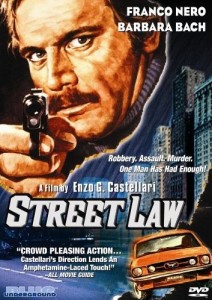

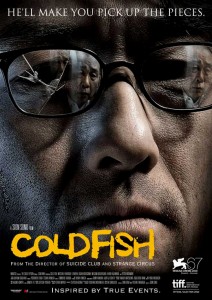
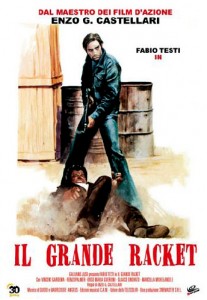
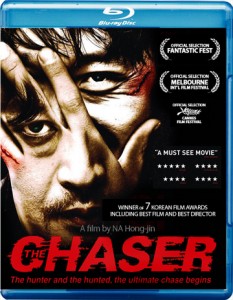
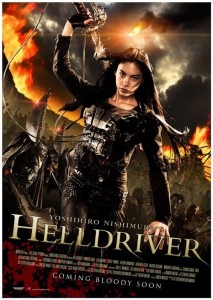
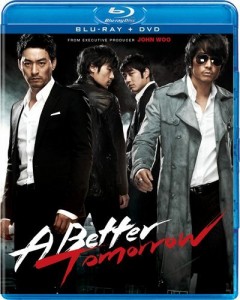
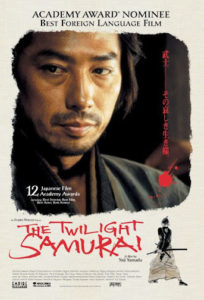
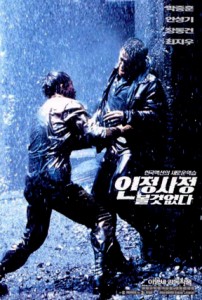

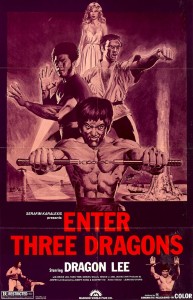
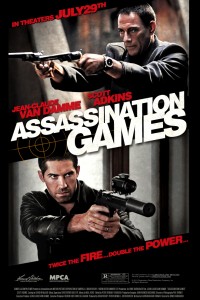
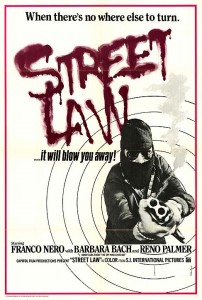
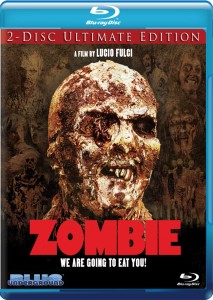
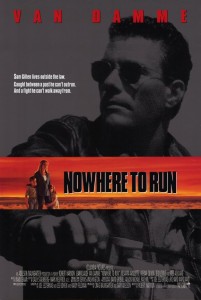




Be the 1st to Comment